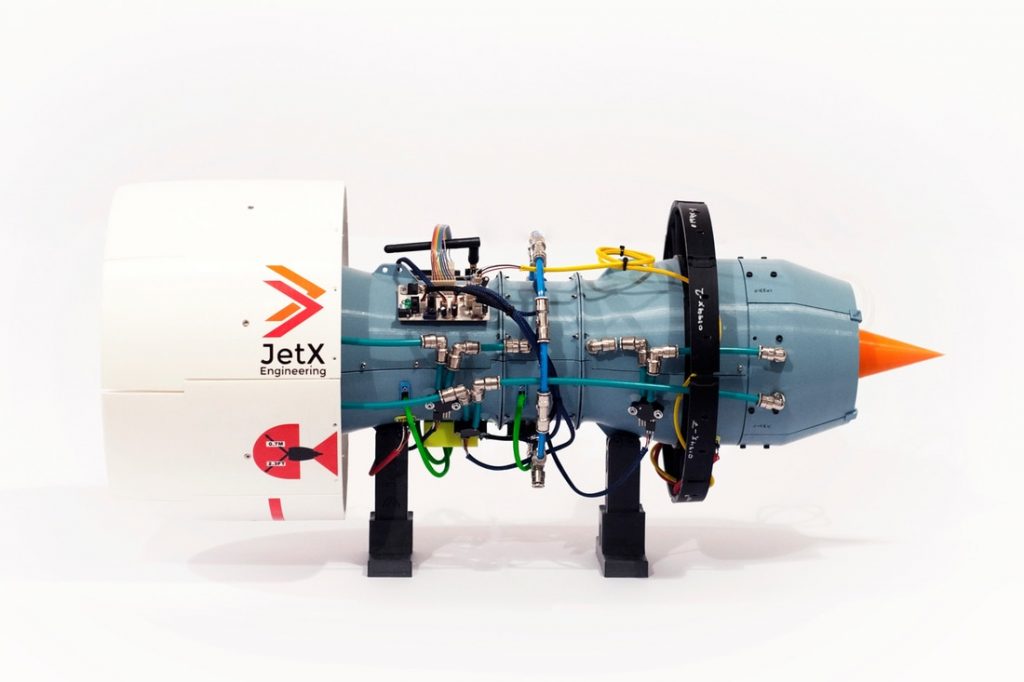A surge of academic projects, business deals, innovative applications and eye catching designs feature in this edition of Sliced, carrying the momentum of 3D printing through into the new year. This article features the latest news from from the likes of UL, Arburg, Kwambio, the University of Tokyo, Peter the Great St. Petersburg Polytechnic University and more.
It all starts with a robot
In the video below a humanoid robot design by a team at the University of Tokyo flexes its artificial muscles with a regime of push ups, sit ups, crunches and stretches. The majority of the bot is made of machined aluminum alloy, but several complex parts are made from 3D printed ABS and stainless steel. Full results of Kenshiro’s workout are published online in Science Robotics.
Minnesotan 3D printing service bureau Di Labs has devised a heavy duty pipe-cutting tool using HP Multi Jet Fusion (MJF) technology.
Peter the Great St. Petersburg Polytechnic University (SPbPU), East China Normal University and the Indian Institute of Technology Roorkee have collectively won an award for a project capturing the world in 3D. The team has had its efforts recognized by the BRICS international scientific consortium comprising Brazil, Russia, India, China and South Africa.
Schwarzite shapes, 3D printed for the first time at Rice University, have brought a previously theoretical strong, light and durable material to life. Chandra Sekhar Tiwary a Rice postdoctoral researcher explains,
“You can make a whole building out of this material, and if something falls on it, it’s going to collapse slowly, so what’s inside will be protected.”
A similar discovery relating to the structure of 3D graphene was made by a team at MIT who used 3D printing to realise gyroid shapes for the first time.

The team behind the 3D printing facilitated Bloodhound Supersonic Car (SSC) has confirmed that it will undergo 400mph and 500mph speed tests in October 2018 at Hakskeen Pan, South Africa
Foodies on the lookout for a new experience can check out a free event in Amsterdam later this month. 3D Food Printing with byFlow on Horecava 2018 will take place on January the 11th at InnovationLAB, RAI Amsterdam. Find tickets here.
And Concurrent Technologies Corporation (CTC) has been granted a patent for “Additive Manufacturing Using Metals from the Gaseous State” for helping to make thin walled metallic parts.
Learn more
The city of Portsmouth in the UK has received a new makerspace launched by 3 friends who want to encourage the community to “make anything.” The Maker’s Guild operates on a subscription basis, giving members access to a host of small scale fabrication tools.
A teacher in Hawaii has won $100 thousand to launch a STEAM education program at her school in Honolulu. Awarded by Farmers Insurance, Patricia Morgan says the money will be used to coding, 3D modeling and digital skills that children need in order to thrive.
JetX Engineering, a group created by students at the University of Glasgow in Scotland, is set to work on two new generations of jet engines throughout 2018. The first of these engines, the X-Plorer 1, was made through 2901 hours of 3D printing and entered tests in 2017.

Underwriters Laboratories (UL) and Tooling U-SME have committed to a program providing 3D printing training for manufacturers in America. A premier of the courses will be previewed at the AMUG Conference from the 8th to the 12th of April 2018.
Built from the ground-up
Dutch 3D printing construction company CyBe has announced plans to build three more houses in the Croix commune of Northern France.
Kilwell Fibretube, a company that started out making specialist fishing rods, has been contracted to 3D print an almost impossible flame-like sculpture in New Zealand. The 12 meter high monument is due to be completed in August 2018, and will take an estimated 16,500 hours to make.
By utilizing a 3D printer’s thickness settings, Japanese engineers Haruki Takahashi and Homei Miyashita have created a uniquely flexible, FDM-made fabric, suitable for everyday wear.
First steps to medical acceptance
Hala Zreiqat’s team at the University of Sydney in Australia have proved that their ceramic, 3D printed implant can be use to fix large fractures in sheep legs.
In another project leading toward market classification, Advanced Design in Surgical Solutions (ADEISS) in Ottawa have made a replacement 3D printed titanium snout for a dog that suffered from a tumor.
Reducing the cost of custom medical models, Hebei University researchers have managed to make ultra-realistic liver models for under $90.
Coming soon to trade fairs and industry near you
Teton Composites is due to release its first software product toward the end of 2018. Development of its finite element analysis (FEA) service for composite materials is funded by the National Science Foundation (NSF). According to Rick Dalgarno, director of analysis services at Teton Composites, the company is “…building a highly skilled technical team that will have the capacity to analyze both continuous and chopped fiber filled structures” that will have applications in additive manufacturing.
Valve engineering firm Callidus has entered into a partnership with large-scale metal additive manufacturing developer Titomic. The two Australian companies will work together to bring Titomic Kinetic Fusion 3D printing to the oil & gas industry.
New York startup Kwambio is to launch its Ceramo OneTM ceramic 3D printer at CES in Las Vegas from the 9th to the 12th of January 2018.
And, later in the year on February the 7th and 8th, Arburg will be exhibiting its Freeformer additive manufacturing system at Pharmapack Europe 2018 in Paris.

Don’t miss our on all the latest news – subscribe to the 3D Printing Industry newsletter, follow us on Twitter, and like us on Facebook.
Featured image shows Sliced logo over Kenshiro, the University of Tokyo’s humanoid workout robot, made with 3D printed parts. Original photo via University of Tokyo



